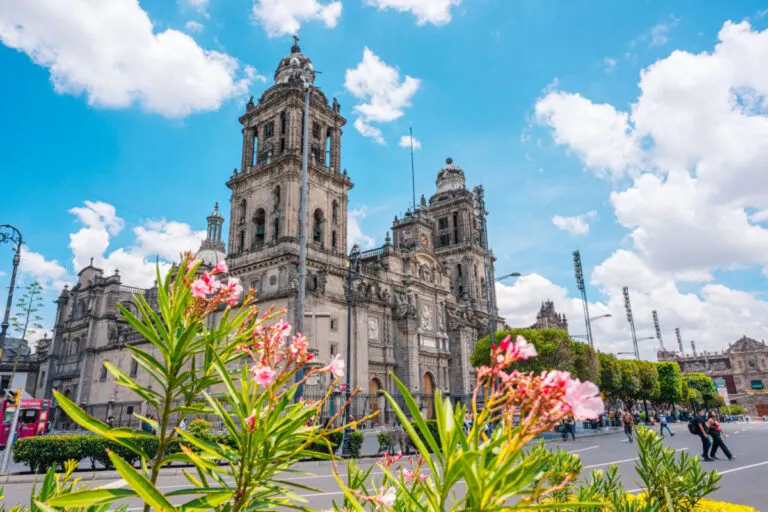Mexico is a primary destination for digital nomads globally, and it doesn’t take you long to figure out why.
Winters as we know them in the Northern Hemisphere, are pretty much a non-existent concept south of the border; the culture is vibrant and welcoming, and the cost of living is lower.
While the likes of Tulum and Playa Del Carmen have stolen the limelight, however, mainly due to their beautiful beaches, it’s a non-coastal city that’s experiencing the biggest surge in digital nomadism, with the population of remote workers having grown three-fold in the last half decade.
The Mexican Caribbean may have the tropical atmosphere and turquoise waters, but it’s beautifully chaotic Mexico City nomads are flocking into:
Why Is Mexico City So Popular With Digital Nomads?

Mexico City is the number one digital nomad destination in Mexico, with an expat population of around 104,000, according to the most recent census, easily surpassing Cancun – and its accompanying Mayan Riviera resorts Playa Del Carmen and Tulum – Puerto Vallarta and Los Cabos.
The capital’s popularity can be attributed to a number of factors, but a running theme among nomad reviews is how surprisingly affordable it is to live: according to Nomad List, remote workers can live in Mexico City on between $1,306 and $2,039 per month.

Mexico City Is A Bargain For American Nomads
It helps that food is inexpensive: in popular U.S. nomad hotspots like Denver, Atlanta, Chicago or Austin, you’d be paying considerably more in rent for a similar one-bedroom flat in a suboptimal location, and on top of that, $35 – $49 on meals per day if cooking isn’t your forte:
In Mexico City, you can get five tacos from a street vendor for a negligible $3, there’s plenty of affordable mid-range eateries with whole meals costing roughly ten bucks, especially around Roma and Polanco, and even a more elaborate dinner in a fancier restaurant is likely to cost you only $30.

Additionally, you should budget 2,000 Mexican pesos (or the equivalent to $117) for monthly groceries, and $67 for a monthly gym membership. Nomads also love the Mexican capital for its robust nomad-friendly infrastructure, and by that we mean:
- Wide availability of long-term rentals
- Several unique districts with their own charm and character to choose from
- Plenty of work-friendly cafes
- 572 coworking spaces listed officially listed from $12 per day
It Is A One-Of-A-Kind Cultural Hotspot

Other than being affordable and very liveable, Mexico City is a world-class cultural hotspot, with monumental buildings that are centuries-old, an eclectic heritage, combining native Aztec and European influences, and a plethora of museums that will keep the History buff that lives in you entertained.
With its imposing Metropolitan Cathedral, imperial palaces and Baroque architecture, it is one of the most beautiful capitals in Latin America, perhaps rivaled only by Argentina’s stately, Paris look-alike Buenos Aires.
From the landmark-packed Centro to the wide, leafy boulevards of Roma, lined by ornate facades, or the upscale Condesa, every bit as elegant as the name, there’s always something new and exciting lurking in every corner of this sprawling metropolis.
The best thing is, it is surprisingly safe for a city as big and as a tourist: the risk of getting mugged off or pickpocketed is as high as it would be in any big global city, so that’s why general safety precautions are advised, but violence affecting tourists is extremely uncommon.
Out of all nomad destinations in Mexico, the capital seems to be unanimously loved within the fast-growing community.
That’s what the ratings say: 85% of remote workers approve of it, while only 15% dislike Mexico City.
Credit: Source link



